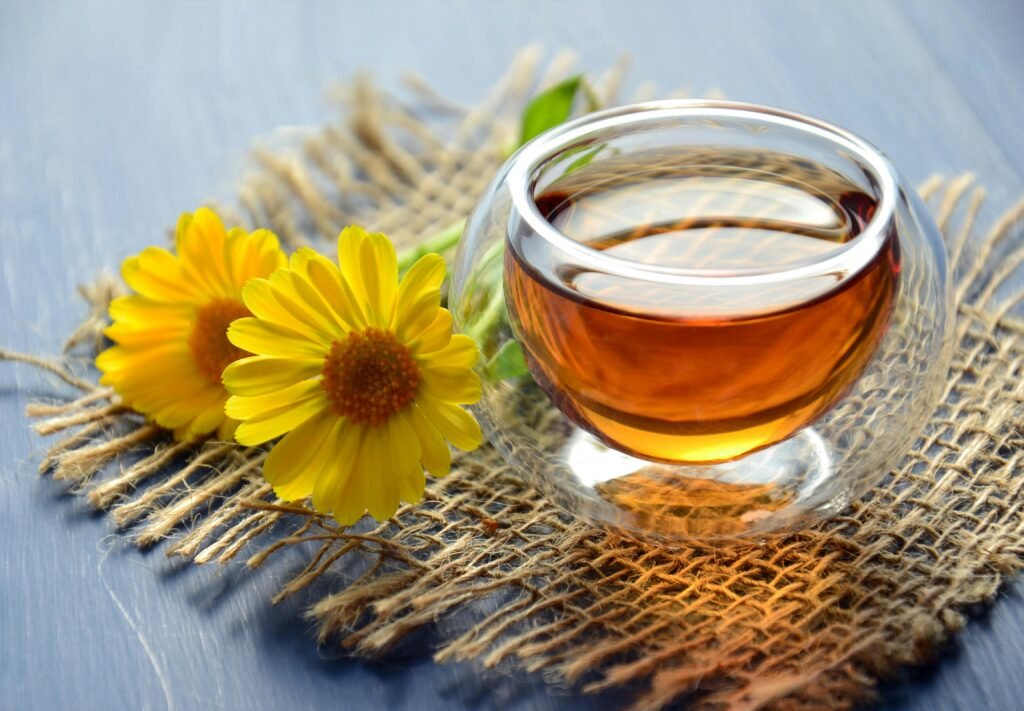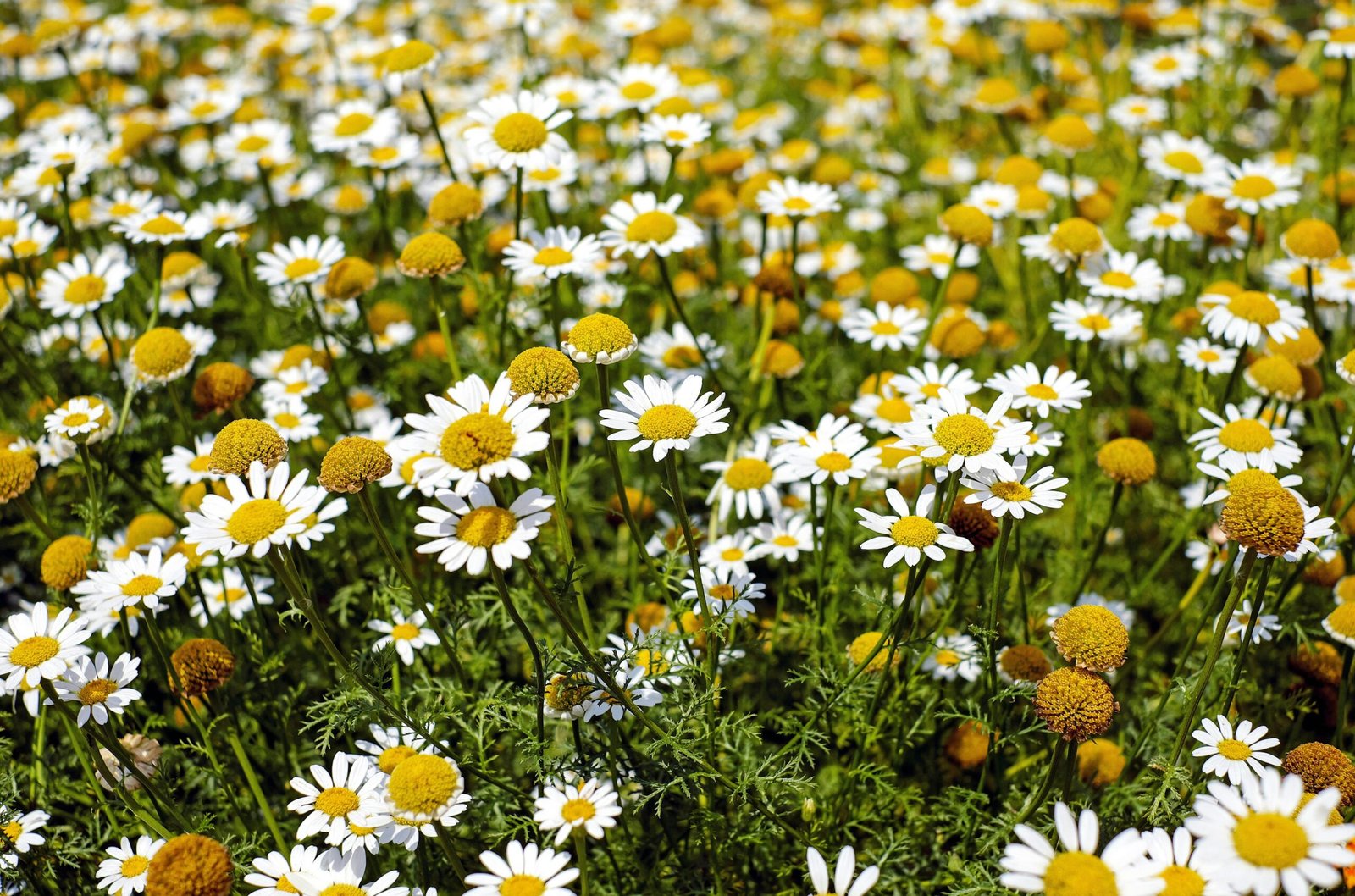Discover the soothing magic of chamomile, a natural stress-reliever that’s been a green family favorite for centuries! This gentle herb is packed with benefits, from calming teas to skin-soothing salves. Get ready to unlock the wonders of chamomile and make it a part of your green family’s lifestyle!
What is Chamomile?
Chamomile (Matricaria chamomilla) is an annual herb native to Europe and Asia, with daisy-like flowers and a sweet, apple-like aroma. Its calming properties have made it a staple in natural medicine and skincare.
Natural Benefits
Promotes Relaxation: Chamomile tea calms minds and bodies.
Soothes Skin: Chamomile oil and creams ease eczema, acne, and irritation.
Improves Sleep: Chamomile’s calming effects aid restful sleep.
Eases Digestive Issues: Chamomile tea soothes stomach upset and cramps.
Calms Anxiety: Chamomile’s anti-anxiety properties reduce stress.
Tips & Precautions
Allergic Reactions: Rare, but possible; patch test before using.
Pregnancy & Breastfeeding: Consult a healthcare professional before using.
Interactions: Consult with healthcare professional before combining with medications.
Quality: Choose organic, high-quality chamomile products.
Recipes with Chamomile for Health & Wellbeing

Calming and Soothing Chamomile Tea
Ingredients:
– 1 teaspoon dried chamomile flowers
– 1 cup boiling water
– Honey or lemon (optional)
Instructions:
1. Steep chamomile flowers in boiling water for 5-7 minutes.
2. Strain and enjoy hot or iced.
3. Add honey or lemon to taste.
Nourishing and Protective Chamomile Calming Salve
Ingredients:
– 1/4 cup chamomile oil
– 1/4 cup coconut oil
– 1 tablespoon beeswax
– 2 tablespoons olive oil (optional)
– Essential oils (optional)
Instructions:
1. Mix chamomile oil, coconut oil, and beeswax in a double boiler.
2. Stir until melted and smooth.
3. Add olive oil and essential oils (if using).
4. Pour into a tin or jar and let cool.
Relaxing and Rejuvenating Chamomile Bath Bombs
Ingredients:
– 1 cup baking soda
– 1/2 cup chamomile oil
– 1 tablespoon citric acid
– 1 tablespoon Epsom salt (optional)
– Food coloring (optional)
Instructions:
1. Combine baking soda, chamomile oil, and citric acid in a bowl.
2. Mix until well combined.
3. Add Epsom salt and food coloring (if using).
4. Press into a mold and let dry.
Uplifting and Calming Chamomile Lemon Balm Tea
Ingredients:
– 1 teaspoon dried chamomile flowers
– 1 teaspoon dried lemon balm leaves
– 1 cup boiling water
– Honey or lemon (optional)
Instructions:
1. Blend chamomile and lemon balm in a tea infuser.
2. Steep in boiling water for 5-7 minutes.
3. Strain and enjoy hot or iced.
4. Add honey or lemon to taste.
Variations and Tips:
– Use fresh chamomile flowers for a stronger flavor.
– Add lavender or calendula for enhanced relaxation benefits.
– Substitute coconut oil with sweet almond oil for a lighter texture.
– Use chamomile salve on skin irritations or minor cuts.
– Create a chamomile bath bomb gift set for friends and family.
Where to Buy Chamomile
1. Health food stores
3. Local herbalists or farmers’ markets

How to Grow Chamomile
Chamomile (Matricaria chamomilla) is a low-maintenance, fragrant herb that’s perfect for gardens and indoor spaces. With its soothing properties and delicate white flowers, chamomile is a great addition to any green family’s lifestyle. Here’s a step-by-step guide on how to grow chamomile:
Climate and Soil Requirements
- Cool temperatures between 60°F to 80°F (15°C to 27°C)
- Well-draining soil with a pH between 6.0 and 7.0
- Partial shade, especially in warmer climates
Sowing Seeds
- Choose a location with good air circulation to prevent fungal diseases
- Sow seeds in spring (after the last frost) or fall (about 8 weeks before the first frost)
- Plant seeds 1/4 inch deep and 12-18 inches apart
- Water gently but thoroughly
Watering and Care
- Water chamomile plants regularly, but avoid overwatering
- Mulch around the plants to retain moisture and suppress weeds
- Fertilize lightly with a balanced fertilizer once a month
- Prune the plant regularly to encourage bushy growth and prevent it from becoming leggy
Harvesting
- Pick individual flowers or leaves, or harvest the entire plant
- Use scissors or pinch off the flowers and leaves to avoid damaging the stem
Pest and Disease Management
Common pests and diseases that affect chamomile include:
- Aphids, whiteflies, and spider mites: use neem oil or insecticidal soap to control infestations
- Powdery mildew and root rot: improve air circulation, reduce watering, and treat with fungicides if necessary
Companion Planting
Chamomile is a beneficial companion plant for:
- Vegetables like carrots, cabbage, and onions: improves growth and flavor
- Herbs like lavender, calendula, and lemon balm: creates a diverse and resilient garden ecosystem
Don’t miss our Green Family favorite read: Amazing Herbs! Know Your Natural Remedies.




